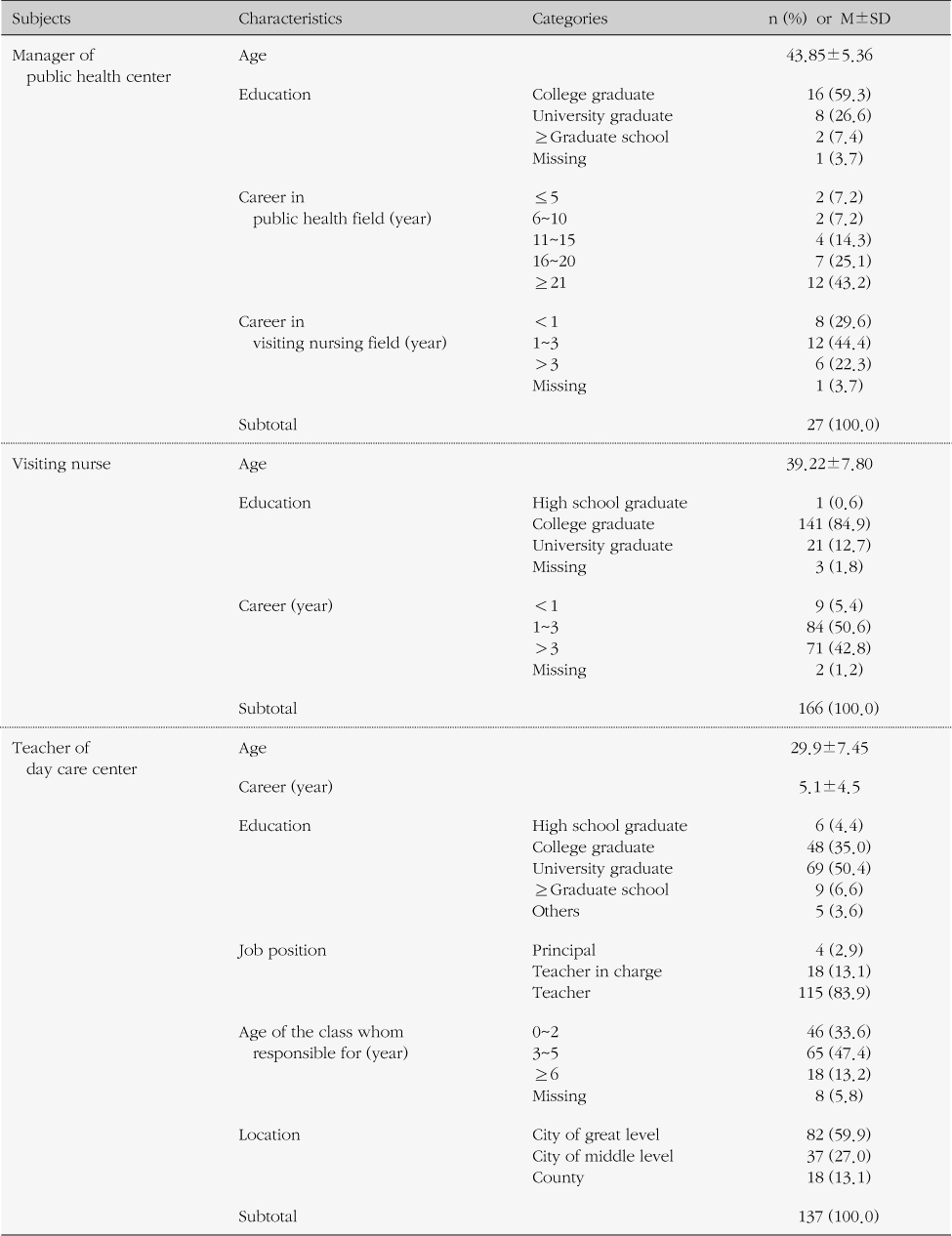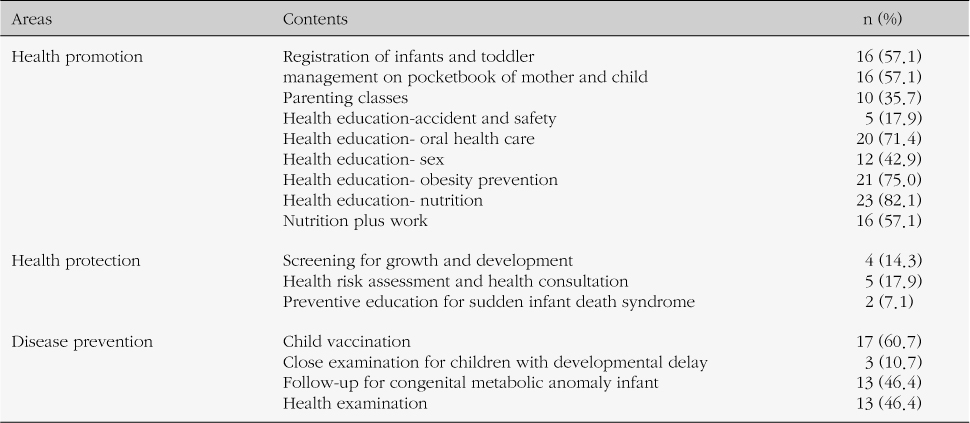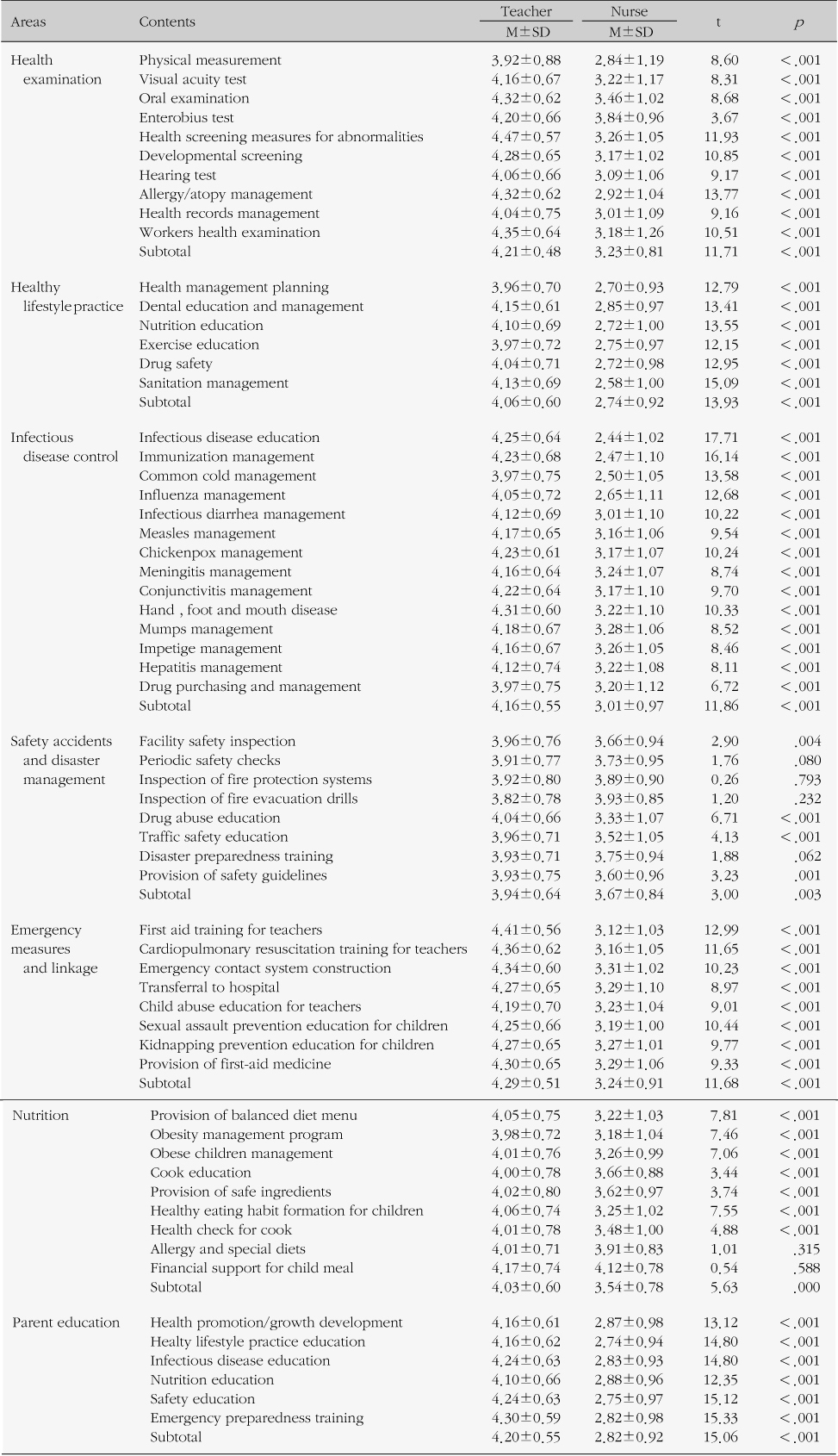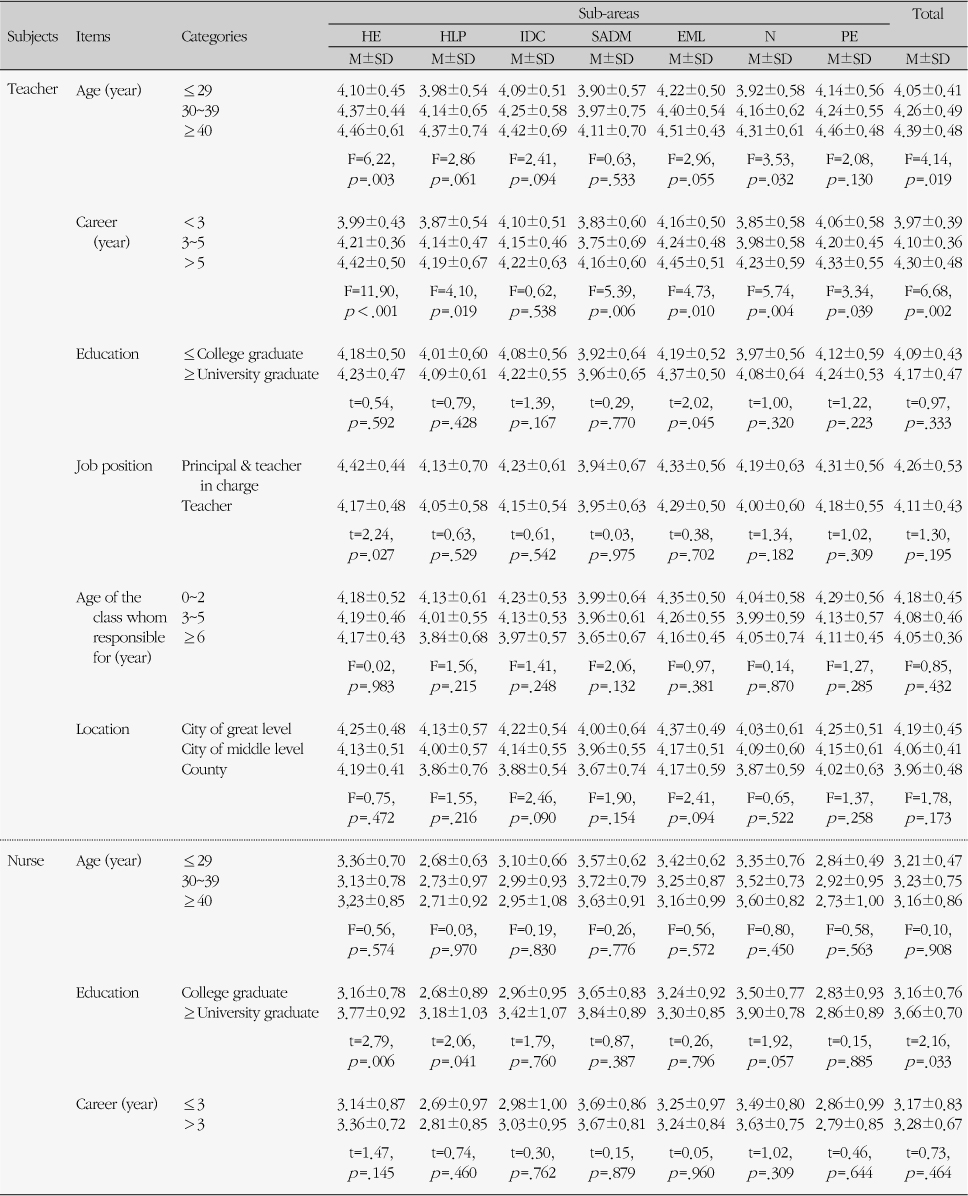References
1. Alkon A, Farrer J, Bernzweig J. Child care health consultants' roles and responsibilities: Focus group findings. Pediatr Nurs 2004;30(4):315–321.
2. Cohen J. Statistical power analysis for the behavioral sciences 2nd edth ed. New Jersey: Lawrence Erlbaum Associates; 1988.
3. Han KJ, Kim JS. Parent's Needs for Center-based Child Care Health Program. J Korean Acad Child Health Nurs 2007;13(1):43–50.
4. Han KJ, Kim JS, Choi MY. Needs of day-care staff for a center-based child care health program II. J Korean Acad Child Health Nurs 2007;13(2):128–135.
5. Hwang NM, Park HT, Kim HR, Shin JH, Lee MS, Lee YS. Development of model on the management system for health promotion programs linked to maternal and child health programs in public health centers Seoul: Korea Institute for Health and Social Affairs; 2003.
6. Jung CW, Kim OJ, Min HS. A study of effect of the evaluative accreditation system of daycare center. J Child Educ 2008;17(1):269–279.
7. Kim EH, Choi HS, Oh HS. The influence of the cognizance of childcare teachers about dental care on oral health of infants. J Korean Acad Dent Hyg 2006;8(1):17–28.
8. Kim IO, Kang RH. A survey on the health examination of child care centers. Korean J Child Health Nurs 2005;11(3):308–315.
9. Kim JS, Han KJ. Health problems and health services in child day care centers. Korean J Child Health Nurs 2006;12(1):25–33.
10. Kim MH, Kwon IS, Kim SO, Kim EK, Kim TI, Moon JH, et al. Nursing care of infants and children Seoul: Soomoonsa; 2010.
11. Kim SJ, Lee JE, Yang SO, Kang KA, Chang EY, Oh KS, et al. Perception of Child Day Care Center Teachers on Issues and Needs in Child Health Management. J Korean Acad Child Health Nurs 2011;17(1):10–21.
12. Kim H, Ra J, Lee H, Choi E. Health management status of day care centers. J Korean Acad Child Health Nurs 2008;14(3):295–304.
13. Lee ES, Kim CN. A study on the occurrences of accidents among children in nursery school and kindergartens. J Korea Community Health Nurs Acad Soc 2003;17:96–112.
14. Lu N, Samuels ME, Shi L, Baker SL, Glover SH, Sanders JM. Child day care risks off common infectious diseases revisited. Child Care Health Dev 2004;30(4):361–368.
15. Ministry of Government Legislation. Childcare act Seoul: Ministry of Health and Welfare; 2010.
16. Ministry of Health and Welfare. Guideline for customized home visiting health service Seoul: Ministry of Health and Welfare; 2010-a.
17. Ministry of Health and Welfare. 2009 Statistics on child care programme Seoul: Ministry of Health and Welfare; 2010-b.
18. Oh K, Sim MK, Choi EK. Knowledge, self-confidence and practice of teachers concerning health and safety of children in child-daycare centers. J Korean Acad Child Health Nurs 2008;14(2):155–162.
19. Oh KS, Sim MK, Choi EK. Effect of an education program on child health and safety for child care teachers. J Korean Acad Child Health Nurs 2009;15(1):5–14.
20. Park SJ, Lee HO. The needs of child care workers concerning accreditation support. J Korean Soc Early Child Educ Care 2007;2(1):59–78.
21. Ryou HJ, Nam HJ, Min YH, Kim YJ, Park HR. Analysis of food habits and nutrients intake of nursery school children living in Anyang City, based on Z-score of weight for height. J Korean Diet Assoc 2004;10(1):1–12.
22. Song KJ, Park SH, Cho JS, Kwon MK, Park JS, Nam SN, et al. A study on the nurse performance appraisal in a university-affiliated hospital. Clin Nurs Res 2006;12(1):97–108.
23. Wold JL, Gaines SK, Leary JM. Use of public health nurse competencies to develop a childcare health consultant workforce. Public Health Nurs 2006;23(2):139–145.
24. Yang SO, Kim SJ, Lee SH, Shin HR, Seo WK. A study on the development of policy and strategies for health management of children in community child facility (Policy-08-37) Seoul: Management Center for Health Promotion; 2009.



